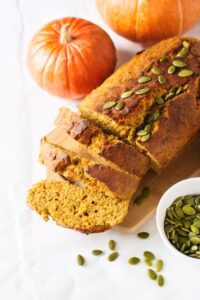
The Step Count “Sweet Spot”
Finding the Ideal Step Count for Health and Longevity By Paige Mandel, MS RD CDN A common knee-jerk response to the arbitrary question of “how many steps should


Finding the Ideal Step Count for Health and Longevity By Paige Mandel, MS RD CDN A common knee-jerk response to the arbitrary question of “how many steps should

Insights and Press: Featuring Laura and Rebecca CLICK TO READ Rebecca’s Article Featured In VeryWell Fit: The Turkey Trot Deserves Your Thanksgiving Attention CLICK TO WATCH Laura on CBSN: How

Navigating the Holidays While in Recovery: A Compassionate Guide By Paige Mandel MS, RD, CDN Adapted from Balance Webinar “Holiday & Recovery: Your Guide to Navigating the Holidays and Recovery”

Navigating PCOS with a Weight-Neutral Approach By Rebecca Jaspan, MPH, RD, CDN, CDCES Edited By Laura Cipullo, RD, CDCED, CEDRD-S Polycystic Ovarian Syndrome, or PCOS, is an endocrine disorder that

Navigating Eating in College: Dorm/Apt Grocery Staples By Paige Mandel, MS RD CDN In Part One of this blog series, we learned first what normal eating looks like, and then

Fall in Love with Fall Snacks By Rebecca Jaspan, MPH, RD, CDN, CDCES It is finally feeling like Fall in the Northeast. The air is getting cold and crisp

Starting Your Mindfulness Practice: Five Key Steps By Rebecca Jaspan, MPH, RD, CDN, CDCES The term “mindfulness” gets thrown around a lot these days, but what does it actually

Hashimoto’s Thyroiditis: Which style of eating is best for you? By Rebecca Jaspan, MPH, RD, CDN, CDCES Have you been recently diagnosed with Hashimoto’s thyroiditis? If you’ve gone to

Navigating Eating in College: Where Do I Start? By Paige Mandel, MS RD CDN Whether you’re the new kid on the block as a freshman, or gearing up for

Hashimoto’s Thyroiditis: Managing Symptoms Through Diet and Lifestyle By Rebecca Jaspan, MPH, RD, CDN, CDCES The thyroid, a butterfly-shaped organ located at the front of the neck, is small but

Sign up for Laura Cipullo’s Nutrition & Wellness Newsletter to receive expert guidance on mindful eating, balanced nutrition tips, and practical advice for living a healthier, happier life. Choose what topics you want to hear about to get the resources you need.

Copyright © 2024 Laura Cipullo